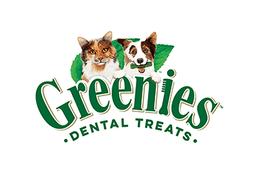The Great Dane, known as the "gentle giant," is a breed that combines size with a gentle and friendly temperament. Originally bred in Germany as hunting dogs, they were used to track and hunt wild boars. Despite their imposing stature, Great Danes are known for being affectionate and easy-going, making them popular family pets.
Great Danes are one of the largest dog breeds, standing between 71 to 81 cm tall and weighing between 45 to 55 kg. They come in a variety of colours, including fawn, brindle, blue, black, and harlequin. Their life expectancy is relatively short, averaging between 7 to 9 years.
Great Dane Dog Breed Facts & Characteristics
| Dog Breed Facts & Characteristics | Details |
|---|---|
| Origin | Germany, 1800s |
| Also known as | Grand Danois, Deutsche Dogge, German Mastiff, German Boarhound, “Apollo of dogs” |
| Bred for | Hunting wild boar, guarding, companionship |
| Size | Giant; 71 to 81 cm in height |
| Weight range | 45 to 55 kg |
| Colours | Fawn, brindle, blue, black, harlequin |
| Life expectancy | 7 to 9 years |
| Coat | Short, dense coat |
| Temperament | Courageous, friendly, gentle |
| Exercise requirements | Moderate |
| Best suited for | Active households, experienced dog owners |
| Apartment friendly | Better suited to larger properties |
Personality
Great Danes are known for their friendly, gentle, and affectionate nature. They are typically good with children, but their large size can make them a bit overwhelming for very young kids. Although they are generally welcoming to strangers, they can be cautious at first, and their size alone is often enough to deter any would-be intruders. Early socialisation and training are essential to ensure they grow into well-mannered adults. While Great Danes are moderately active, they need enough space to move around, making them better suited to larger properties rather than apartments.
Grooming
The Great Dane’s short, dense coat is relatively low maintenance. Weekly brushing will help remove loose hair and keep their coat looking shiny and healthy. Despite their size, they are only moderate shedders, but their large surface area means there will still be a noticeable amount of hair around the home. Occasional baths and regular nail trimming are necessary to keep them looking and feeling their best. As with all breeds, flea control year-round is recommended, along with tick prevention if you live in an area where ticks are common.
Feeding
Feeding a Great Dane requires careful attention to their diet, especially given their large size and the potential for health issues such as bloat. It's essential to feed them a high-quality large breed dog food that supports their growth and development. To reduce the risk of bloat, it's recommended to divide their daily food intake into two or more smaller meals rather than feeding them all at once.
Great Danes benefit from a diet rich in protein to maintain muscle mass and healthy fats to support their joints and coat. Given their predisposition to joint issues, including supplements such as glucosamine and chondroitin can be beneficial. Always ensure they have access to fresh, clean water, and monitor their weight to avoid obesity, which can exacerbate health problems.
Common Health Concerns
Great Danes, like many giant breeds, are prone to several health concerns that potential owners should be aware of. One of the most serious conditions is bloat (Gastric Dilatation-Volvulus), where the stomach twists and traps gas inside, requiring immediate veterinary attention. Hip dysplasia is another common issue, causing pain and potentially leading to arthritis over time.
Dilated cardiomyopathy (DCM), a heart condition that affects the heart’s ability to pump blood effectively, is also prevalent in the breed and can lead to heart failure. Additionally, osteosarcoma, a type of bone cancer, is more common in large and giant breeds like the Great Dane. Regular veterinary check-ups, a balanced diet, and appropriate exercise are essential to help manage and potentially prevent these health issues.
Did You Know?
Did you know that the beloved cartoon character Scooby-Doo was inspired by a Great Dane? Despite Scooby’s goofy and sometimes timid personality, his breed is known for being gentle giants with a courageous and friendly nature. The creators of Scooby-Doo chose the Great Dane to balance out his scaredy-cat tendencies, as the real-life breed is known for its bravery and loyalty. Scooby-Doo has since become one of the most famous dogs in the world, further highlighting the Great Dane’s iconic status.
Great Dane FAQs
How much does a Great Dane cost in Australia?
In Australia, the cost of a Great Dane puppy typically ranges from $2,500 to $5,000, depending on the breeder, lineage, and location. Additional costs for vaccinations, grooming, and regular vet visits should also be considered.
Are Great Danes good with children?
Yes, Great Danes are generally good with children due to their gentle and friendly nature. However, their large size means they could accidentally knock over small children, so supervision is recommended during interactions.
How much exercise does a Great Dane need?
Great Danes require moderate exercise to maintain their health and happiness. Daily walks are essential, but they are not as high-energy as some other breeds. However, it's important not to over-exercise them, especially when they are puppies, to prevent joint issues.
Are Great Danes easy to train?
Great Danes are intelligent and eager to please, making them relatively easy to train. However, due to their size, early training and socialisation are crucial to ensure they grow up to be well-behaved adults. Positive reinforcement methods work best with this breed.
Can Great Danes live in an apartment?
While Great Danes are generally calm and laid-back, their large size makes them better suited to larger properties with enough space for them to move around comfortably. They can adapt to apartment living if given sufficient daily exercise, but a house with a yard is ideal.
Do Great Danes shed a lot?
Great Danes have a short coat that sheds moderately year-round. Regular brushing can help manage shedding and keep their coat looking healthy. Their large size means that even moderate shedding can result in a noticeable amount of hair around the home.
What do Great Danes eat?
Great Danes should be fed a high-quality large breed dog food that supports their growth and overall health. Dividing their daily food intake into smaller meals can help prevent bloat, and their diet should include nutrients that support joint health. Always provide fresh, clean water.
What are the common health problems in Great Danes?
Common health issues in Great Danes include bloat, hip dysplasia, dilated cardiomyopathy, osteosarcoma, and hypothyroidism. Regular veterinary check-ups and a balanced diet can help manage these concerns.



























